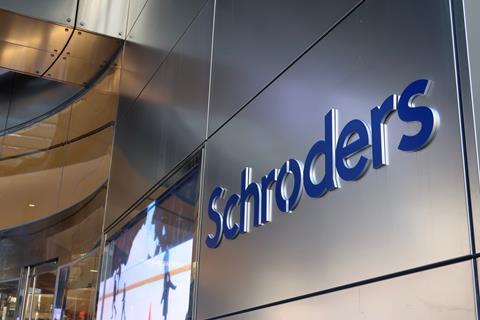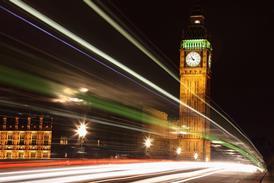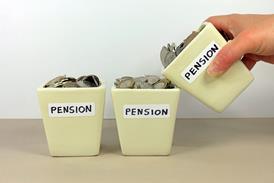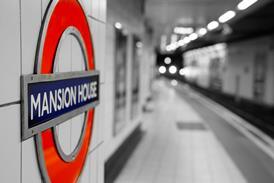Earlier this year, asset management giant Schroders announced that its £645m defined benefit pension scheme had elected to pursue a ‘run on’ strategy after generating a significant surplus. Pensions Expert put five questions to Lisa Mundy, chair of the Schroders Retirement Benefits Scheme and a professional trustee at BESTrustees, about how and why the board arrived at this decision.
Pensions Expert: How has the Schroders Retirement Benefit Scheme’s (SRBS) performance and strategy contributed to the strong funding position of the scheme?

Lisa Mundy: The funding position has improved steadily over the past five years, attributable to a combination of strong investment returns in excess of the liabilities, favourable demographic experience, and robust risk control using a liability-driven investment (LDI) strategy.
The defined benefit (DB) section has an investment strategy that aims to manage risk in a robust way while providing a stable return that has a high probability of maintaining the scheme’s surplus over time. This is achieved using a cashflow-driven investment (CDI) strategy that is implemented and managed in-house by Schroders.
Under this approach, the investment strategy is predominately invested in assets that deliver secure, contractual sources of return as well as predictable cash flows that can be used to meet the ongoing pension benefits. This includes allocations to buy-and-maintain credit, securitised credit and private credit.
Schroders has considerable expertise in designing and managing CDI investment strategies for pension schemes. For the Schroders Retirement Benefits Scheme, it manages all aspects of the DB section’s investment portfolio, including the portfolio’s liquidity and collateral requirements, the redemption of legacy illiquid assets and transferring the income generated by the portfolio to the trustees’ bank account to meet the monthly pension payments.
Schroders and the pension scheme have been long-standing users of LDI to manage the volatility of the funding position - in fact, both were early adopters. Our segregated LDI mandate remains a central part of the SRBS investment strategy. The Schroders LDI team were able to use several market leading techniques to help us navigate ‘bumps in the road’ like the 2022 gilts crisis.
Although Schroders manages the DB section’s assets, the trustee is supported in the approach it takes by its independent investment adviser, Momentum.

How and why did the trustees arrive at the decision to run on rather than select another endgame option?
Mundy: Schroders has consistently supported the DB section of the pension scheme, especially after a deficit arose during the financial crisis - where it made a significant contribution.
With the recent valuation indicating a very strong funding position, Schroders proposed to the trustee board that the DB section continue to run on. As part of this proposal, Schroders suggested using a portion of the DB surplus to fund some of its defined contribution (DC) commitments.
At BESTrustees we are acutely aware that the trustees’ primary duty is to protect the interests of all pension scheme members and ensure that pension benefits can be paid, both now and in the future, a position recognised by my fellow trustees. It was essential for the trustee board to evaluate Schroders’ proposal within this framework and alongside other endgame options.
The decision-making process included reviewing documentation to understand the powers of both the trustee and Schroders under the Schroders Retirement Benefits Scheme rules – to establish what was possible.
The trustee board assessed Schroders’ covenant, the necessary protections for the run on proposal, and its overall sustainability, all with the support of the scheme’s advisers – these being Aon as scheme actuary and providing covenant advice, and A&O Shearman being the legal adviser. Ensuring fair and equitable treatment of members was also a priority.
Our third-party covenant review determined that, with adequate protections against downside events, the security of member benefits was unlikely to be materially weakened by the proposal. The trustee board recognised that Schroders operates in a strong regulatory environment, which would not necessarily be enhanced for members by transferring the benefits to an insurer.
The proposal made was designed to be sustainable for the DB section, such that the funding level is expected to remain stable over the medium term, assuming market conditions remain unchanged. This was reviewed and verified by the scheme actuary.
However, as the future is uncertain, the trustees prioritised having guardrails in place that continue to protect the DB section funding. The use of surplus will stop in certain circumstances, including if the funding level falls below a pre-agreed threshold - a level that ensures a prudent surplus buffer is still maintained. Additionally, Schroders has committed to additional contributions if necessary.
Given the strong surplus position and the other factors considered, and despite having the ability to purchase insurance policies for member benefits in full, the trustee board concluded that there was a high degree of certainty that benefits will be provided without the use of insurance and that member benefits are appropriately secure in the scheme. Because of this the trustees felt confident in agreeing to Schroders’ proposal. This action is intended to control the future growth of the surplus while improving Schroders’ cashflow, strengthening the company’s ability to support the DB section if needed in the future.
This is, of course, a position we will keep under review.
Can you describe how the run-on approach will work in practice? How can the trustees extract excess funds to be used in the DC offering?
Mundy: The Schroders Retirement Benefits Scheme has a DB section, which is closed to future accrual, and a DC section that is open to current Schroders UK employees, both within the same trust.
The pension scheme rules do not legally segregate assets into a DB and DC section. The rules allow employer DC contributions to be ‘credited’ to the scheme, essentially allowing assets from the DB “section” to fund employer contributions.
In practice, Schroders calculates the full contribution due each month and deducts the agreed monthly DC subsidy from that amount. The reduced amount is paid to the scheme, with the balance being met from the surplus and the full amount being invested in member’s DC accounts.
The pension scheme’s Schedule of Contributions and Statement of Investment Principles have been used to capture how the mechanism works, including, importantly, under what circumstances the mechanism would stop.
What changes have the trustees made (or will they make) to the investment strategy to support the run-on approach?
Mundy: The SRBS has reached its long-term funding objective. Having now concluded the most recent valuation and agreed Schroders’ proposal to run on and use a portion of the DB surplus to fund some of its DC commitments, the trustee board is considering what the new long-term funding objective should be.
As well as the factors already mentioned, the new DB funding code will play a part in shaping that, and the pension scheme’s investment strategy will then be adjusted accordingly.
Schroders has been active in the UK investment and productive finance areas over the past couple of years. While obviously legally separate from the sponsor, what investments does the pension scheme have domestically and in private markets?
The scheme’s current private market investments include allocations to UK junior infrastructure debt and UK real estate debt. It is expected later this year the trustees will be carrying out an investment strategy review. This will include reviewing the allocation to private market investments and considering whether new commitments will be made.















